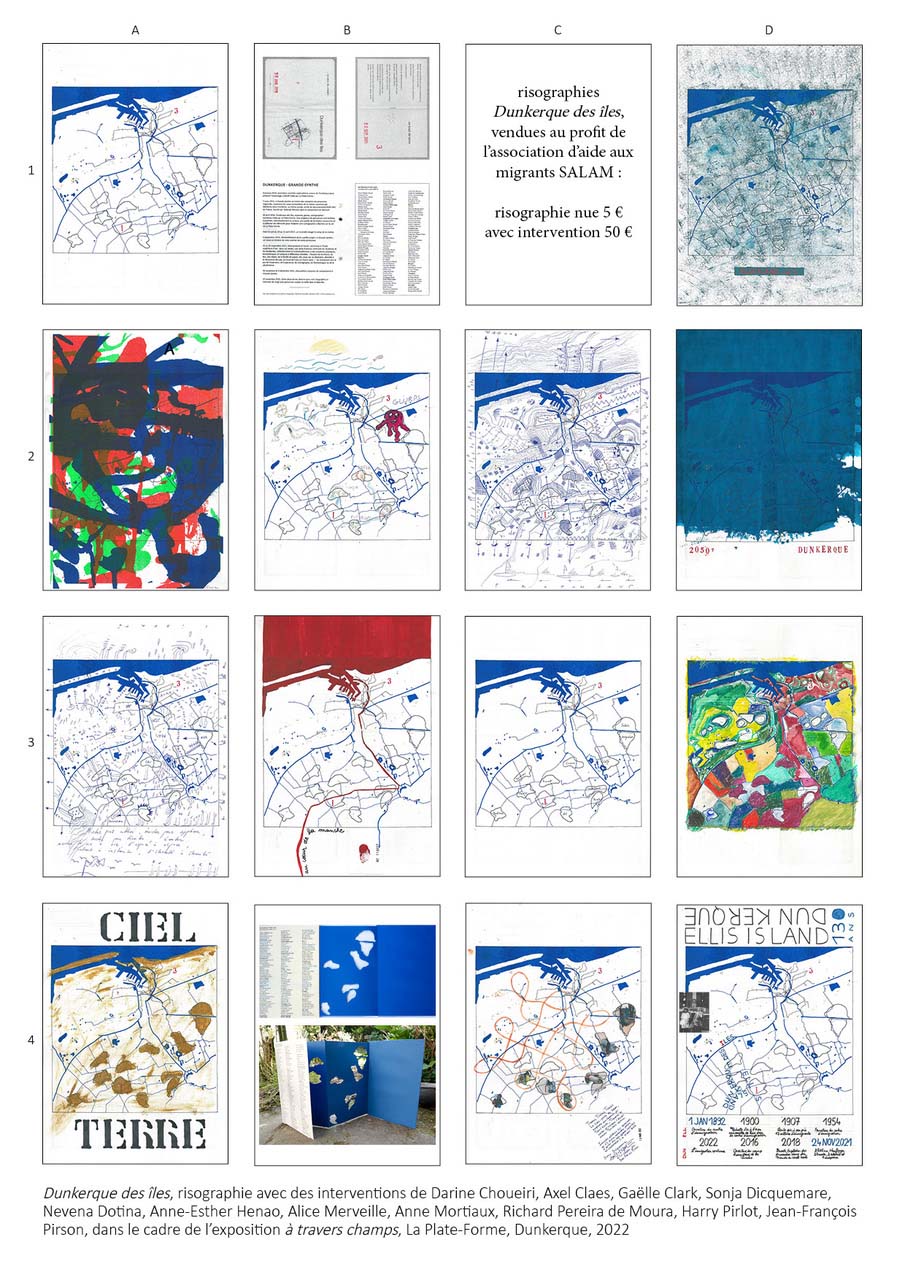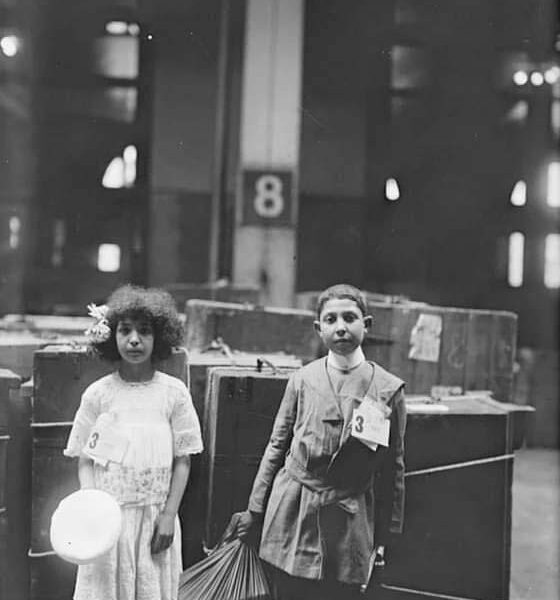On the 13th of January 2022, I received an invitation from my friend, the artist-pedagogue Jean-François Pirson, to intervene in one of his projects. The invitation’s postcard was accompanied by two maps of the Dunkirk region, in risograph printing. The topography of the site is peculiar; the dunes seem to float like islands between the interlacing waterways. The landscape already incites for the sedimentation of different stories, of traces that will get washed away by the tide or windblown, now and then.
JF’s project stemmed from walking in this part of Dunkirk, from some findings on the ground and the story of migrants connected to the place, especially the nearby migrant camp of la Grande-Synthe.
I looked at the map and asked JF for guidance, how do you want me to intervene? I have never been there; I cannot have a real feel of this landscape. You are free to do want you want he said.
I look at the map; it is appealing. The waterways are streaks of blue, smearing the paper and concentrating in a big stain up north, the Channel. The dunes look like blown up bubbles trapped within the square framed map. Two red spots, number I and 3, refer to the legend of places. It is beautiful, but I am clueless.
First intervention
Then it happened. I was listening one day to a podcast related to the work of the french writer George Pérec. The movie Ellis Island, done by Robert Bober and commented by George Pérec was brought up. Somehow, the two territories aligned before me, on opposite sides of the globe, but a parallel story. One on the Channel, the other on the Hudson.
So the first intervention on JF’s map retraces the “opposite” parallels (I call them) between the story of Ellis Island and Dunkirk. The crisscrossing of key historic dates made the connection. Actually, this year 2022, in the midst of migration crises of different kinds, we are reminded of the opening of Ellis island, 30 years ago in 1892. The island on the Hudson, next to the Statue of the Liberty, became the salvation of migrants looking for bluer horizons on the other side of the Atlantic. Whereas the building of the Center for Migration in Ellis Island received the golden medal at the Paris Exposition Universelle in 1900, in 2016 the authorities are dismantling the fortune camps in Calais, and in 2017 the one of Linière in Dunkirk after a fire ravaged it. Dunkirk is a temporary island, like Ellis, where migrants await before joining the desired new land at the horizon. Some don’t wait, they dive in the blue waters with a precarious boat. The imminent Brexit made this channel crossing even more vital for the migrants, who are submitted to European migratory laws that suddenly won’t apply. 2018 witnessed an intensive traffic of small boats in the Channel; the 17th of April 1907 became historic with the arrival of 11,747 migrants in one day to Ellis. The tragic end of the story occurs when the illicit camp of la Grande Synthe in Dunkirk is evacuated on the 16th of November 2021; the migrants are left with nothing but their unbearable life. On the 24 of November 2021, a shipwreck in the Channel: 27 deaths, 2 survivors and one missing. Most of them didn’t know where to go after the camp’s destruction and were desperate to join family members in England.

Second intervention
Then I thought. The channel couldn’t be blue. It is not bluer on the other side. But deep red.
Red, like these veins on the landscape, not the blue streaks of the waterways, but the drained blood veins of the migrants drenching the sea.
In this story we all have blood on our hands. Joseph Conrad resurfaces, from further up north, on the south bank of the river Thames, near Gravesend. It is outside JF’s map, but the waters merge at the end, like the stories. Heart of Darkness deserves a re-reading in the light of contemporary stories. As a reminder, I would paint the channel red, and entitle the second intervention: au coeur de la Manche, in the heart of the Channel. A tribute to 27 persons lying deep down on the seabed, the one that cannot be dismantled, and so much others.
Different persons answered the invitation of JF. All the maps were exposed at the Center La Plateforme in Dunkirk. They can be purchased and profits go to the migrant’s organization SALAM. If you happen to be around Dunkirk I would recommend the visit of JF’s expo entitled à travers champs. https://www.laplateforme-dunkerque.com/ for a different reading of Dunkirk.


Different interventions on JF’s basemap of Dunkerque.
Photography in B&W: 1905. Brother & sister in Ellis Island awaiting transportation to Manhattan. courtesy of rarehistoricalphotos.com

